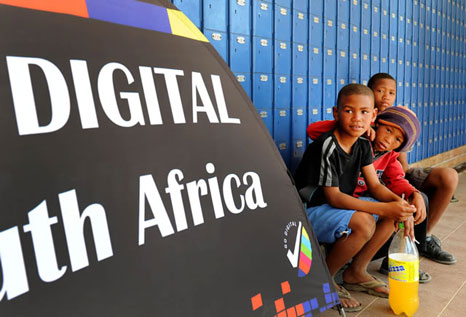It sounds like a couch potato’s dream – more channels, more programmes, more sports, entertainment and music – and all in the language of your choice.
Coupled with breathtakingly clear pictures and enhanced sound quality to bring every viewing experience to life, South African television is on the verge of a spectacular – and socially beneficial – upgrade.
This experience will be available to every person with a television set as from the end of November to early December. This week the new digital terrestrial television (DTT) broadcasting will be launched. It will migrate the broadcasting from analogue to digital television.

South Africa’s television history is a short one. Television arrived in South Africa only in 1976, which ironically turned out to be a political watershed year.
The irony being that the regime feared that television would dilute the government’s control over broadcast media. That it would expose South Africans to world views and experiences that would undermine the apartheid ideology and that television would see the English language overrun Afrikaans.
Only after being singled out as being one of only a few countries where people were unable to watch live footage of the first man on the moon in 1969, did the regime begin to relent.
In 1971 the first television service for the country was agreed to and experimental broadcasts in the main cities began on May 5, 1975, with a single channel nationwide service starting a year later.
Television was however successfully used by the global anti-apartheid movement to promote the message of a free democratic South Africa. After the first democratic election in 1994, a number of new television channels were introduced by the SABC and private operators. This included the launch of the country’s first free-to-air television channel. E.tv subsequently followed in 1998.
The first phase of the DTT will start on October 3 in the square kilometre array (SKA) area of the Northern Cape.
The second-phase ‘commercial’ nationwide digital switch-on will follow in the last week of November to the first week of December, with the sale of set top boxes which converts the analogue signal to digital. Viewers who subscribe to digital satellite television do not have to buy the set top boxes.
Poorer households will be partially subsidised. A box will cost about R400 and more than 3 500 installers around the country have been identified to assist with installation.
The third phase is the analogue switch-off that will make South Africa completely digital. The start of switching off of the analogue signals is December 2013. The deadline for all countries to complete their move to digital television is 2015 when the UN’ International Telecommunication Union (ITU) will no longer protect analogue frequencies.
Digital migration places us on par with the US, Japan, Singapore and some countries in Europe. Digital television bridges the divide between the ‘connected’ and ‘unconnected’.
It will free up space in the 800 megahertz (MHz) frequency, creating more bandwidth for mobile operators to bring fourth-generation (4G) communication to mobile phones.
This will assist in expanding broadband services around the country and particularly into the rural areas. Government is targeting broadband for all by 2020. Currently mobile broadband penetration stands at less than 11% for households and 8% for business. Fixed broadband in South Africa is below 10%. The Global System for Mobile Communications (GSM) estimates that reaching a 20% wireless broadband penetration rate in South Africa by 2015 will generate an increase of $8,5 bn (R65.8bn) in Gross Domestic Product (GDP) and create about 28 000 jobs. The Department of Communications foresees 1 000 small, medium and micro enterprises entering the electronics manufacturing sector and competing with existing, larger players.
Furthermore, youth from rural areas will be skilled and trained to maintain and install set top boxes.
Digital television will help uplift South Africans and create a socially inclusive information society.
There are about 11.5 million television-owning households, of which just under three-quarters (72%) rely on free-to-air broadcasting services.
Digital broadcasting allows for more channels and a greater demand for local content which gives rise to new opportunities in movie production.
It also has the important potential for more regional radio stations broadcasting in local languages.
Its wider reach will allow broader exposure to government services.
Government is laying the foundation and invites all South Africans – even the enthusiastic couch potatoes – to be active participants in this exciting new phase of our developmental path.
Phumla Williams is Acting CEO of the Government Communications and Information System (GCIS)




